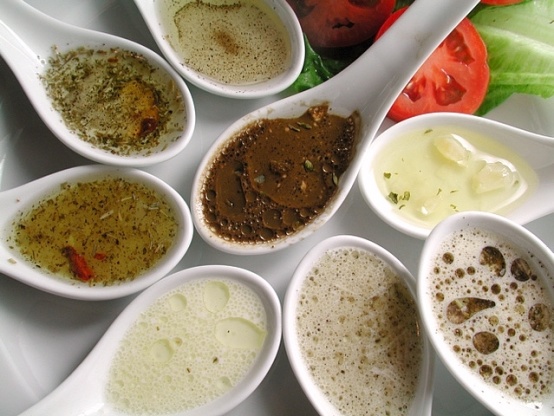We’re going back to basics today with one of my most essential everyday recipes, vinaigrette! You know how much I love salads, and I’m surprised I didn’t think to share my basic vinaigrette recipe with you until now.
Vinegar and olive oil-based vinaigrette is a light, zippy, heart-healthy salad dressing. It’s great on greens, vegetables and fruits. You can change up the flavor by using different vinegars. Vinaigrette is easy to adjust to taste, and I’ve included notes how to do so in the recipe.
Once you start making homemade vinaigrette, you won’t go back. Whisk together some basic ingredients, and you’ll end up with dressing that tastes infinitely better than store-bought dressings. No preservatives here!
Homemade vinaigrette keeps for 1 to 2 weeks in the refrigerator, so it’s worth the 5 minutes it takes to mix it up. Then you can keep it on hand for all of your salad needs. Let’s get to it!

Basic Vinaigrette Ratio & Ingredients
The traditional French vinaigrette formula calls for 1 tablespoon vinegar for every 3 tablespoons olive oil. Modern vinaigrettes often call for a bit more vinegar than that, but it’s always up to you. Kale salads can tolerate more zingy dressings, while you’ll want to use less vinegar for mild greens like spring greens.
Here’s what you’ll need to make vinaigrette:
- Olive oil for your base
- Vinegar of choice
- Dijon mustard for some flavor complexity and creaminess
- Maple syrup or honey for a little sweetness that balances the vinegar
- Garlic for oomph
- Salt and pepper
While you can use any tasty vinegar you’d like to make vinaigrette, here’s how I choose between my three go-to vinegars.
Balsamic vinegar makes a bold, slightly sweet dressing that is wonderful on green salads with fruit, such as apples, strawberries or peaches. Examples include my strawberry arugula salad and favorite green salad with apples.
Red wine vinegar packs a punch and works well with other bold flavors and bright veggies, like tomatoes, bell peppers, olives, feta and more (think Greek salads or Italian salads).
White wine vinegar a more mellow vinegar and it’s especially nice with more delicate flavors like spring greens, cucumber, zucchini and sweet corn. It’s lovely on just about every green salad out there. I’ve used it recently in my orange orzo salad and corn salsa.
Champagne vinegar is even more mild than white wine vinegar. Apple cider vinegar is sweet-tangy and tastes lightly of apples. Sherry vinegar is similar to red wine vinegar but slightly less intense.
Watch How to Make Vinaigrette
Please let me know how you like this vinaigrette in the comments! I love hearing from you and I’m dying to hear about the salads you make with it (#saladobsessed).
You’ll also find four delicious salad dressings in my book, Love Real Food. Many more salads here!
How To Make A Basic Vinaigrette
FAQ
What is basic vinaigrette made of?
How would you describe vinaigrette dressing?
What’s the difference between balsamic dressing and vinaigrette?
Is vinaigrette a healthy dressing?
What is a vinaigrette salad dressing?
FAQ’s Vinaigrette, at its core, is simply a mixture of vinegar and oil with some flavor added to it. With a good quality oil, a flavorful vinegar, and a pinch of salt, a classic vinaigrette salad dressing can transform even the most mundane greens.
How do you make vinaigrette?
Seriously: Vinaigrette is a cinch to make. With our method, you don’t even need a whisk. Combine the ingredients in a jar with a tight-fitting lid like a half-pint Mason jar. Seal and shake well. You’ll be able to see the mixture emulsify as the vinegar and oil mix. Pour the dressing over a salad and enjoy. How Long Does Vinaigrette Last?
How do you mix vinaigrette dressing?
There are a few different methods you can use to mix together vinaigrette dressing: blend, whisk or shake. You can combine the ingredients by using a blender which is simple and efficient or you can whisk the ingredients together in a small bowl using a fork or a whisk. The last option is to put the ingredients in a jar and shake by hand.
Which vinaigrette contains acid?
All vinaigrettes contain acid. Whether it be citrus juice or vinegar (vinaig-rette, vinegar, get it??), acid is an element that is absolutely essential. For a simple vinaigrette, we like red wine vinegar, white wine vinegar, or sherry vinegar, which offer plenty of tang and flavor without being too overwhelming.
